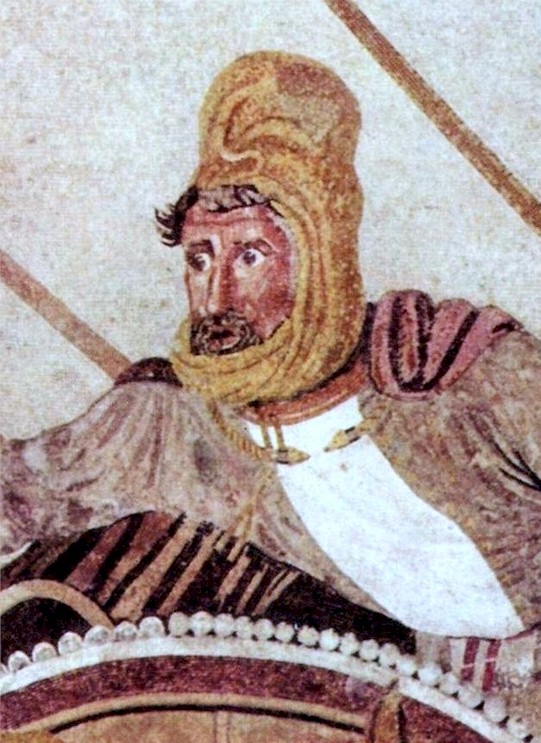The last
of the Achaemenid dynasty to rule the Persian empire was a weak leader
whose indecisiveness & personal cowardice left him unable to inspire
Persian resistance to the onslaught of the armies of
Alexander.
Allegedly a grandson of a daughter of Artaxerxes II (d. 358 BCE)
who had served as satrap (provincial governor) of Armenia, he was not
prepared to rule Persia's complex sprawling
realm. Yet he was thrust into that role
by the death of Artaxerxes III (338 BCE) & the murder of his heir
Artaxerxes IV (336
BCE). Originally called Artashata, he adopted the name Darius when he
was enthroned by his predecessor's assassin, the grand vizier Bagoas.
No sooner had Darius assumed
the role of king than he faced a Greek invasion of Asia Minor, aborted
only because its leader
Philip II of Macedon was murdered. But this proved to be just a
temporary reprieve, since less than two years later Philip's son,
Alexander, invaded with an even larger force & a determination not just
to free Greeks under Persian rule but to end Persian dominion
everywhere.
Instead of personally leading
a Persian counterattack, Darius left it to his satraps to oppose Alexander. Relying heavily on local Greek
mercenaries, the Persians were routed near Troy in the battle of Granicus (May 334
BCE), after which the Greco-Macedonian forces marched across
the whole of Asia Minor, taking major cities from Miletus to Tarsus with
little trouble. A year & a half passed before Darius arrived
at the bay of Issus on the Syrian coast with a Persian army more than
twice the size of Alexander's. When Alexander led an assault directed at
Darius, who had positioned himself at the center of the Persian line,
the Persian monarch panicked and fled the battlefield, leaving his own
family to fend for themselves. Without their leader, the disorganized
Persian army scattered & were slaughtered by Alexander's cavalry.
Alexander himself took Darius' mother, wife & daughters captive, but
treated them as honored royal hostages. After returning to Babylon,
Darius tried in vain to negotiate their release yet made no further
military effort to stop Alexander's conquest of the Levant & Egypt.
It was only after Alexander
crossed the Tigris in northern Mesopotamia that Darius ventured to
reengage him in battle, again with a much larger army. On 1 Oct 331 BCE
they met at Gaugamela (east of modern Mosul, Iraq). Again
Alexander attacked the center of the Persian line & again Darius fled
the battlefield. While Alexander moved south to occupy Babylon, Darius
fled east into Bactria where he was murdered by his own satrap. When his
body was brought to Alexander, the victor ordered a royal burial for his
opponent. Six years later he married Darius' oldest daughter to bolster
recognition of his claim to the throne of the last Persian monarch.
References:
Arrian,
Anabasis
of Alexander 2.6-12, 14; 3.7-16, 19-22; 4.20; 7.4.
Diodorus Siculus,
Library of History 17.31-39, 53-61, 64-65, 73-74.
Plutarch,
Parallel Lives: Alexander 18-22, 29-33, 42-43.
Justin,
Epitome of Trogus' Philippic History 10.3 11.6-15.
Other resources
online:


![]()
![]()
![]()
![]() Perspective on the World of Jesus
Perspective on the World of Jesus ![]()